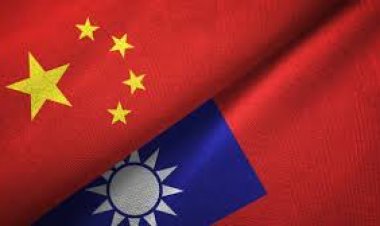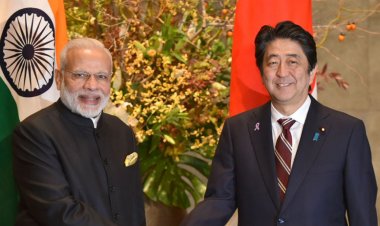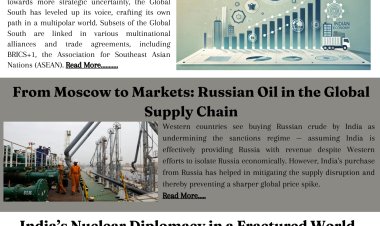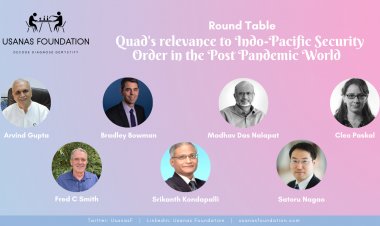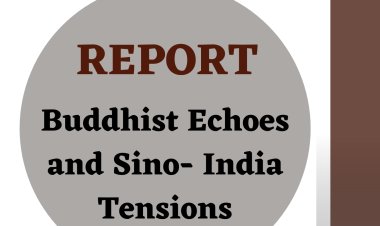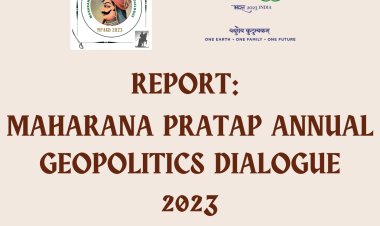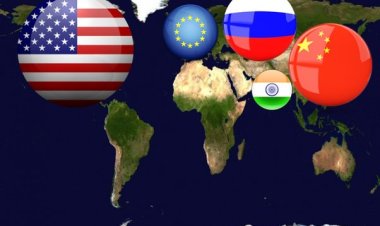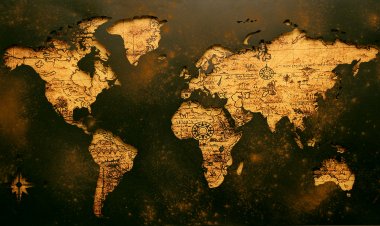Report: Indo-German Future Cooperation in the Indo-Pacific
Usanas Foundation presents its report on the European involvement and the prospect of India-Germany cooperation in the Indo-Pacific.
Report
By Akshay Kumar
Introduction
In September 2020, Germany released its German Government 'Policy guidelines on the Indo-Pacific region' report, which describes the Indo-Pacific as the entire region characterized by the Indian Ocean and the Pacific.[1] Although the idea of the 'Indo-Pacific' can be traced back to the early 19th century, it was only since 2017 that it entered the official diplomatic lexicon. Since then, the term has gained increasing recognition from regional and extra-regional countries around the world. Apart from its obvious geographic and economic importance, the region is home to 38 countries that share 44 percent of the world's surface area, 65 percent of the world population and account for around 62 percent of world-GDP and 46 percent of the world's merchandise trade.[2] The Malacca strait in the Indo-Pacific is one of the world's most crucial shipping waterways and a chokepoint connecting the Indian Ocean to the South China Sea. It has both strategic and economic importance.
A key reason for the regional reinvigoration in geopolitical thinking has been fueled by the increasing Chinese assertiveness in this region. China’s maritime belligerence— the militarization of the illegal artificial islands in the South China Sea, blatant violation of the rules of maritime conduct, non-adherence to the international tribunal's South China Sea verdict — is threatening the rules-based order in the region. China’s attempts at increasing its sphere of influence through the Belt and Road Initiative (BRI) have also cautioned its geopolitical rivals in Asia, Western powers, and their allies due to its possible military character.[3] The BRI has raised regional concerns primarily because of China's hard infrastructure buildup within cities along the route to act as transport hubs for land trade to and from China. China is also heavily investing in ports all over the Indo-Pacific, which is alarming for the other powers in the region.
As the Covid-19 pandemic exposed the world's dependency on Chinese supply chains, especially for critical raw materials, there is growing wariness among the nations that these dependencies would act as diplomatic leverages for the Chinese. The major countries in the world are now focusing on diversifying their supply chains out of China. India, Japan, and Australia launched the Supply Chain Resilience Initiative (SCRI) in 2020 to counter China's dominance over the supply chains of the Indo-Pacific. The pandemic has also deepened the rivalry between the United States and China and has intensified the regional geopolitics of the Indo-Pacific in the face of these security challenges where new regional partnerships like the QUAD have acquired considerable salience.
These developments have elicited reactions from European countries, who view themselves as critical in shaping regional geopolitics. Europe's economy is also highly integrated with the Indo-Pacific through trade, investment, and supply.[4] A free and open Indo-pacific is crucial for its trade and economy, and more than one-third of Europe's exports go to this region. The increased geopolitical tension in the region due to China's growing assertiveness directly impacts their core interests. It has thus become imperative for countries such as Germany, France, the U.K., and the European Union at large to start devising their own Indo-Pacific policy to combat the unilateral domination of China and to help create a just multilateral framework where 'no country should be forced to choose between two sides or fall into a state of unilateral dependency.’[5]
This report provides an in-depth understanding of Germany's Indo-Pacific vision, compares it with the Indo-Pacific strategies adopted by other European countries, and identifies areas of cooperation between India and Germany in achieving the common objectives vision for the region.
To read the full report, Download the PDF:
Disclaimer: This paper is the scholastic contribution from the information available in public domain and does not necessarily reflect the organisation’s viewpoint.

